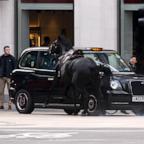Trump at Mount Rushmore: Controversy, fireworks and personal fascination
Trump's long-sought July Fourth visit has sparked racial and health controversy.
President Donald Trump’s trip to Mount Rushmore Friday for flashy fireworks and military flyover was the culmination of his years-long push to bring a July Fourth display back to the larger-than-life monument to four American presidents that has long fascinated him.
But the visit also came as the nation in recent weeks faced a fresh reckoning of monuments around the country seen by many as symbols of racism and oppression, rather than freedom and greatness, and has raised both public health and environmental concerns. Trump leaned into his criticism Friday night to condemn those who are calling for the removal of controversial monuments throughout the country.
"I am here as your president to proclaim before the country, and before the world, this monument will never be desecrated," Trump said during Friday night's speech. "These heroes will never be defaced. Their legacy will never ever be destroyed their achievements will never be forgotten, and Mount Rushmore will stand forever. As an eternal tribute to our forefathers, and to our freedom."
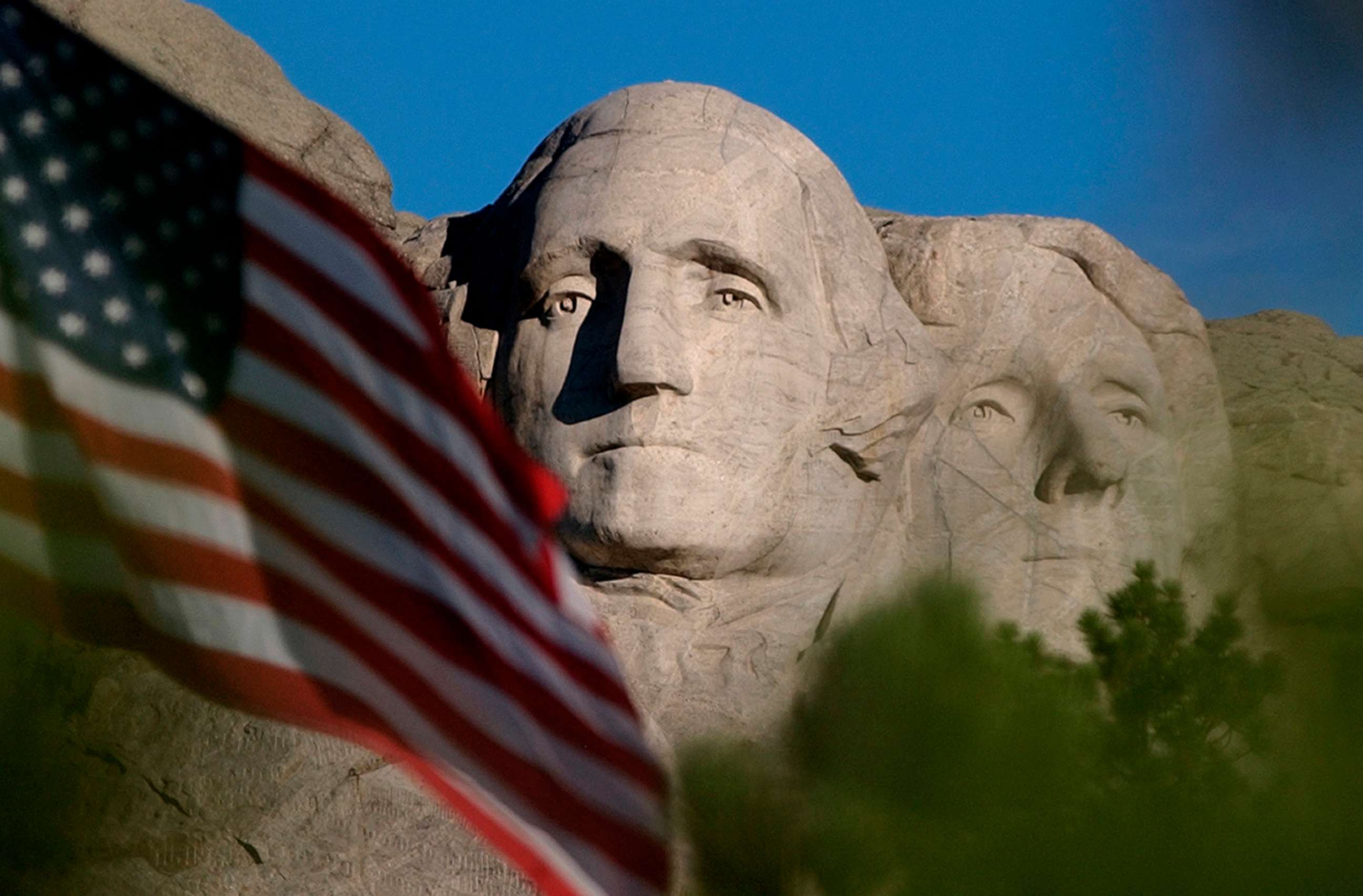
With little mention of the surge in cases in the ongoing COVID-19 pandemic, Trump dove head-first into the culture wars and away from any talk of unity. He railed against protesters throughout his remarks, calling them "angry mobs,” which he says pose a “growing danger.”
“Our nation is witnessing a merciless campaign to wipe out our history, defame our heroes, erase our values and indoctrinate our children," Trump said. " ... Their goal is not a better America. Their goal is to end America."
His speech, attended by about 3,700 people, came as many states are rolling back their reopening plans and as the country posted another record-breaking day in the number of diagnosed coronavirus cases.
Trump made only one, and brief, mention of the coronavirus pandemic at the top of his remarks when he thanked those who were working to defeat it.
“Let us also send our deepest thanks to our wonderful veterans, law enforcement, first responders and the doctors, nurses and scientists working tirelessly to kill the virus," he said.
Few people in the crowd were practicing social distancing or wearing masks Friday night. This comes as Kimberly Guilfoyle, the national chair of Trump Victory Finance Committee 2020 and Donald Trump Jr.'s girlfriend, tested positive for the coronavirus while in South Dakota.
"After testing positive, Kimberly was immediately isolated to limit any exposure. She’s doing well, and will be retested to ensure the diagnosis is correct since she’s asymptomatic, but as a precaution will cancel all upcoming events," Sergio Gor, chief of staff for the Trump Victory Finance Committee, said in a statement. "Donald Trump Jr was tested negative, but as a precaution is also self-isolating and is canceling all public events."
Mount Rushmore's controversial past
While many view the Mount Rushmore monument with awe and national pride, others such as Nick Tilsen, a member of the Oglala Lakota tribe and the president of a local activist organization called NDN Collective, see it as an insulting reminder of how the land in the South Dakota's Black Hills was stolen from Native Americans, part of a long history of their being horribly mistreated.
“Mount Rushmore is a symbol of white supremacy, of structural racism that’s still alive and well in society today,” Tilsen told the Associated Press. “It’s an injustice to actively steal Indigenous people’s land, then carve the white faces of the colonizers who committed genocide.”
Mount Rushmore was conceived in the 1920s as a tourist draw for families on cross-country road trips.
The monument was built under the direction of Gutzon Borglum. Historian Tom Griffith told the AP that Borglum was a member of the Ku Klux Klan.
Since the 1970s, Native American communities have called for more awareness of the history surrounding Mount Rushmore. Now, in light of the recent Black Lives Matter protests and nationwide calls to remove the symbols of America’s racist past, many see this as an opportunity to fuel this movement as well.
Presidents Washington and Jefferson were both slaveowners and Theodore Roosevelt made derogatory comments about "Indians."
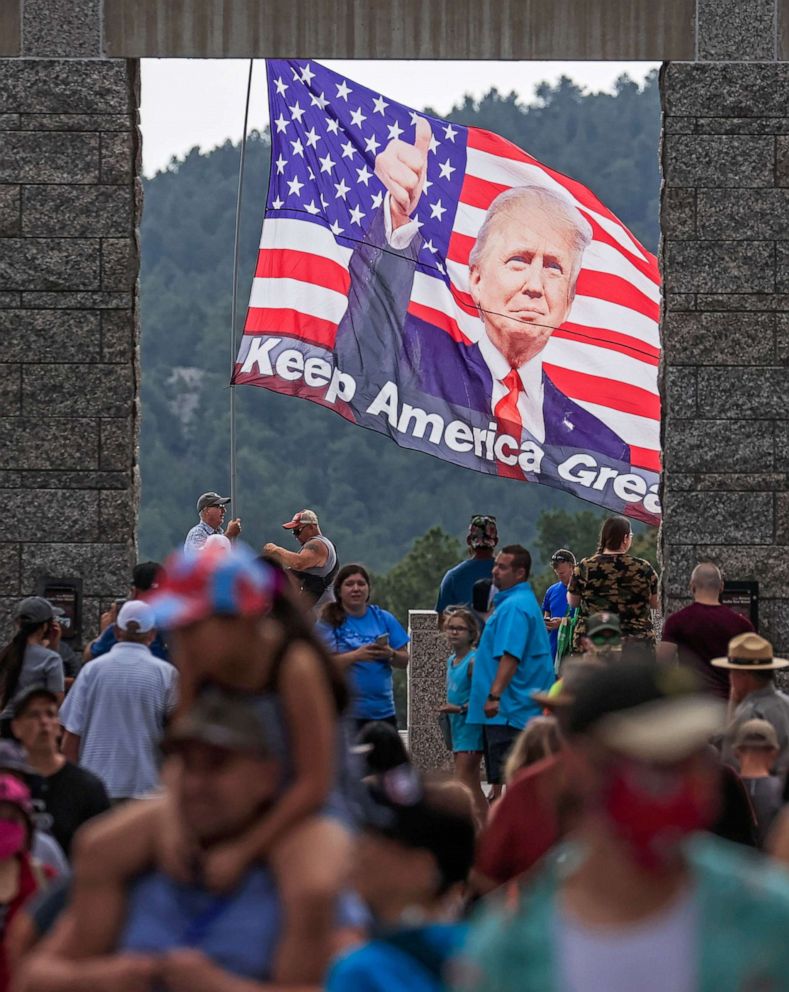
Trump's attack on other federal monuments
The president, however, has been adamant in his efforts to defend Mount Rushmore and other monuments on federal land across the country. He’s called those who want to tear federal monuments “anarchists” and has threatened aggressive prosecution.
The president tweeted on Tuesday that he was "tracking down" the individuals who brandished the "magnificent" statue of George Washington with red paint in Manhattan.
And in an interview this week with Sinclair, the president expressed firm opposition to suggestions from some that the giant stone carving at Mount Rushmore be removed.
"I'm going to a very special place this weekend, as you know, very beautiful monument, it's called Mount Rushmore, and somebody said they want to see that come down, that's never coming down,” Trump said.
At the time, Trump is trying to remove monuments -- of a different kind: federally-owned landmarked for their natural beauty or cultural significance.
In April 2017, the president issued an executive order calling on The Department of the Interior to review whether all such national monuments created since 1996 should be eliminated or shrunk from their current size.
This executive action called into question The Antiquities Act of 1906, which authorized a president to designate federal lands as monuments and dictate how the lands can be used.
“The Antiquities Act does not give the federal government unlimited power to lock up millions of acres of land and water, and it’s time that we ended this abusive practice,” Trump said in 2017.
Eleven months after President Barack Obama created the Bears Ears National Monument in Utah, stretching over 2,000 square miles of wilderness, Trump reduced its size by 85%.
Bears Ears is the first national monument created directly with and due to the request of a coalition of Native American governments.
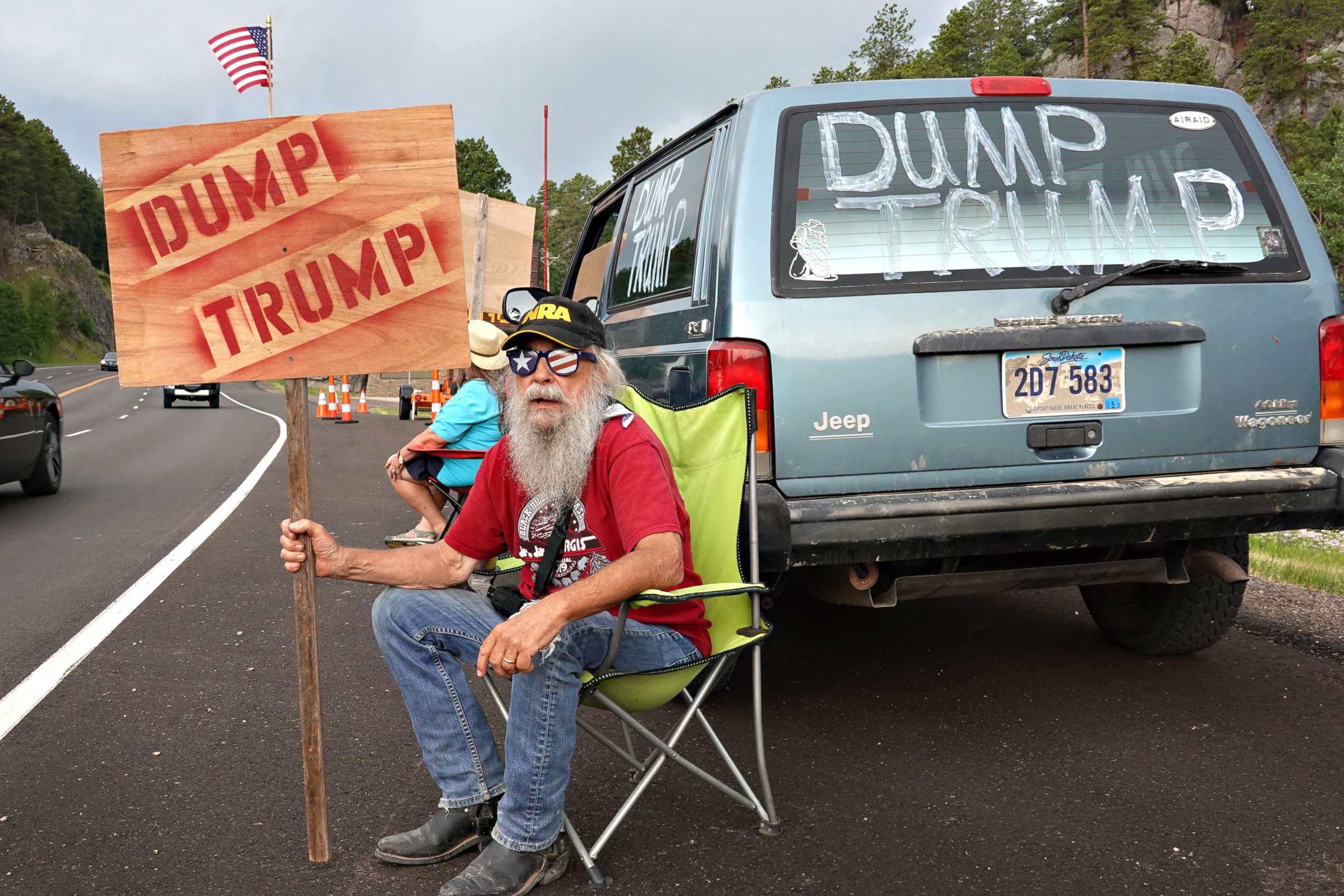
A personal victory
This year’s fireworks display at the foot of Mount Rushmore, for which he has long shown a personal fascination, is also something of a victory for Trump because of the role he played in getting the fireworks approved.
The president has repeatedly noted his role in bringing back the display, including during a visit with South Dakota's Republican Gov. Kristi Noem in December.
“Nobody knows why, but you just couldn’t have it. And now you’re going to have fireworks. And the governor called, and she said, ‘You got to do me a favor.’ Right?” Trump said at the meeting.
“And you did,” Noem replied.
“And we worked it out. And we got it done. And you’re going to have fireworks,” Trump said.
While the president has said, “nobody knows why” fireworks have been banned at the site since 2009, the reason is rooted in environmental concerns and fears that the surrounding forests could catch fire. But in a 2019 interview with the publication The Hill, the president said, “I think they thought ... the stone was gonna catch on fire. That doesn't happen, right?”
Beyond the fireworks, the president has long shown a fascination with the monument and has even jokingly mused about having his own face carved into the mountain alongside the four towering carvings of the presidents historians rank among America's greatest.
“I’d ask whether or not you think I will someday be on Mount Rushmore, but, but here’s the problem. If I did it joking, totally joking, having fun, the fake news media will say, ‘he believes he should be on Mount Rushmore,’ Trump said at a rally in Youngstown, Ohio, in July 2017.
But South Dakota's Republican Gov. Kristi Noem said in a 2018 interview with a South Dakota newspaper that the president once raised the topic with her and that the president seemed “totally serious.”
“I said, 'Mr. President, you should come to South Dakota sometime. We have Mount Rushmore.' And he goes, 'Do you know it's my dream to have my face on Mount Rushmore?'” Noem recalled.
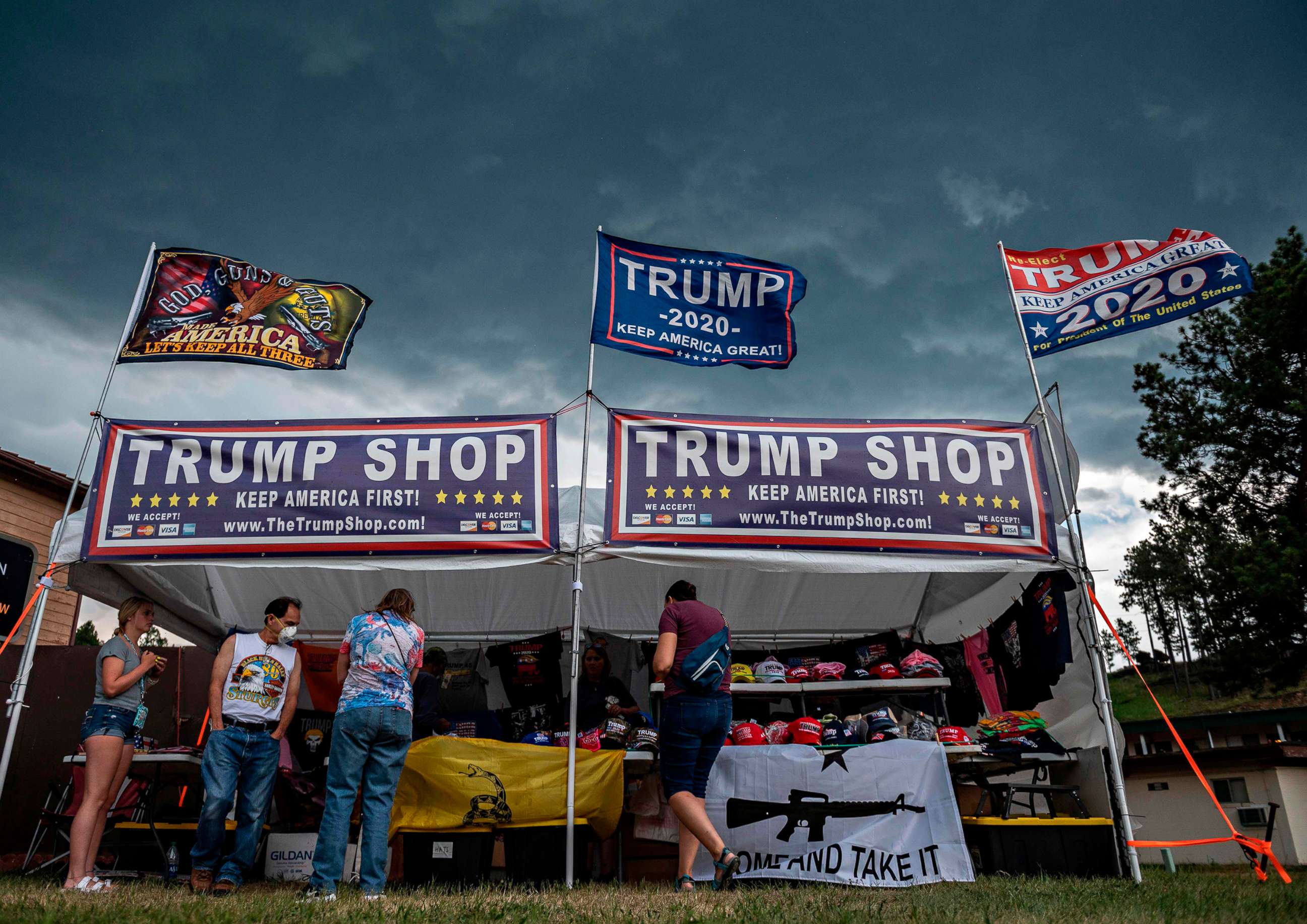
Coronavirus concerns
Friday’s fireworks celebration, expected to draw thousands, caps off a week during which the U.S. has set alarming new records of daily coronavirus cases upwards of 50,000 a day and public health experts have raised alarm that the crowds could produce a "super-spreader" event.
The large-scale event openly flouts the Centers for Disease Control and Prevention recommendations to avoid spreading the coronavirus, with the Noem offering a blunt message to those concerned: there will be no social distancing.
"We told those folks that have concerns that they can stay home, but those who want to come and join us, we'll be giving out free face masks, if they choose to wear one. But we won't be social distancing. We’re asking them to come, be ready to celebrate, to enjoy the freedoms and the liberties that we have in this country,” Noem said in an interview with Fox News on Monday.
Questioned about health concerns related to the event, White House deputy press secretary Judd Deere referred questions to the South Dakota governor’s office, saying it is not a White House organized event. But he added in a written statement that “the President takes the health and safety of everyone traveling in support of himself and all White House operations very seriously.”
“The President looks forward to taking part in the Independence Day festivities, hosted by Governor Noem, and celebrating the greatest country the world has ever known capped off with a magnificent fireworks display above the great faces of Presidents George Washington, Thomas Jefferson, Theodore Roosevelt, and Abraham Lincoln,” Deere said.
ABC News' William Mansell and Justin Gomez contributed to this report.



